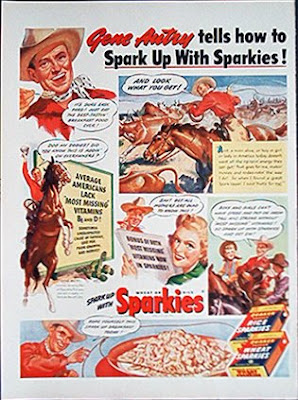 Abram Lincoln was born March 29, 1907, in Lancaster, Pennsylvania. He began studying cornet with his father at the age of five. His dad never let him go to bed at night until he played all major and minor scales. Eventually, Abe settled on the trombone as his instrument. In 1921, he became the solo trombonist with his dad's band, the Bud Lincoln Orchestra, which was also known as the Brunswick Orchestra.
Abram Lincoln was born March 29, 1907, in Lancaster, Pennsylvania. He began studying cornet with his father at the age of five. His dad never let him go to bed at night until he played all major and minor scales. Eventually, Abe settled on the trombone as his instrument. In 1921, he became the solo trombonist with his dad's band, the Bud Lincoln Orchestra, which was also known as the Brunswick Orchestra.In time, Abe became friends with many of the great hot jazz musicians of the time, including the Dorsey Brothers. After Tommy Dorsey joined the Paul Whiteman Orchestra, Abe took his place with the California Ramblers.
 In time, Abe was a member of several of the best known bands of the 1920s and 1930s.
In time, Abe was a member of several of the best known bands of the 1920s and 1930s.He joined the Ozzie Nelson Orchestra in 1934. If a listener pays attention on Ripley's Believe It or Not, one can hear some of the most unusual trombone playing. He became notorious for making animal sounds with his trombone.
Abe was heard on many of the best know and loved radio programs of the Golden Years of Radio. Although his real love was jazz, he was one of the most innovative trombonists of all time. When Universal Pictures created Woody Woodpecker cartoons, his trombone was often the sound of the little red bird.
He was married in 1921 and had a son, Abe Lincoln, Jr.
Abe Lincoln died June 8, 2000, at the age of 93 in Los Angeles.
____________________________________________________________________
 Speaking of Lincolns, Robert Todd Lincoln (1843-1926) was the only one of President Abraham Lincoln's four sons who lived past puberty. By the time his father was inaugurated President, the eldest son was already out of the house (as a student at Harvard University). In 1865 he left school to join the Union Army. He rose to the rank of captain and was present at Appomattox when General Robert E. Lee surrendered.
Speaking of Lincolns, Robert Todd Lincoln (1843-1926) was the only one of President Abraham Lincoln's four sons who lived past puberty. By the time his father was inaugurated President, the eldest son was already out of the house (as a student at Harvard University). In 1865 he left school to join the Union Army. He rose to the rank of captain and was present at Appomattox when General Robert E. Lee surrendered.He had a distant relationship with his father. He was present at Ford's Theater when actor John Wilkes Booth shot his father and was one of the few who stayed around to see him die. He openly wept.
After the Civil War was over he enrolled at the University of Chicago (not the same as the present University of Chicago) and finished his studies in law. He was admitted to the Illinois Bar in 1867. The following year, he married Mary Eunice Harlan (1846-1937). They had two daughters and a son (the son, Abraham Lincoln, II, called "Jack," died of blood poisoning at the age of 16 in London, England).
One of the terrible trivial tidbits about Robert Todd Lincoln was that whenever there was a Presidential assassination he was there.
-Abraham Lincoln (Ford's Theater, Washington, DC)
-James Abram Garfield (Sixth Street Train Station, Washington, DC)
-William McKinley (Pan American Exposition, Buffalo, NY)
After a political/service career, Robert Todd Lincoln took over for George Pullman in 1898 when he died, Lincoln served as president of the Pullman Company until 1911, after which time he served as Chairman of the Board.
Robert Todd Lincoln died July 26, 1926, in Manchester, Vermont, at the age of 83.

































